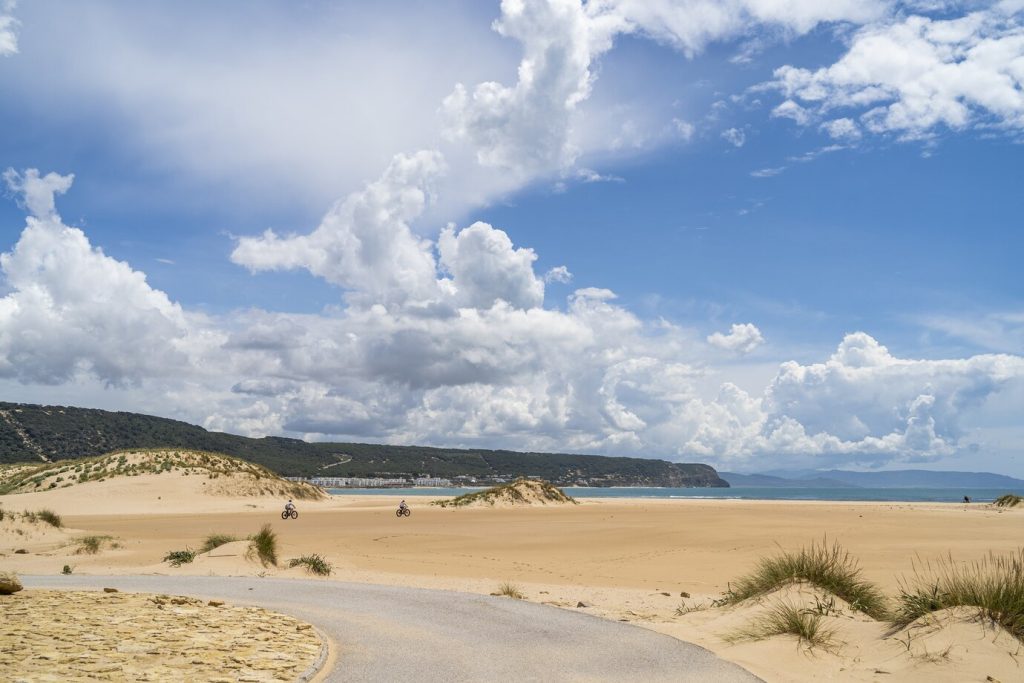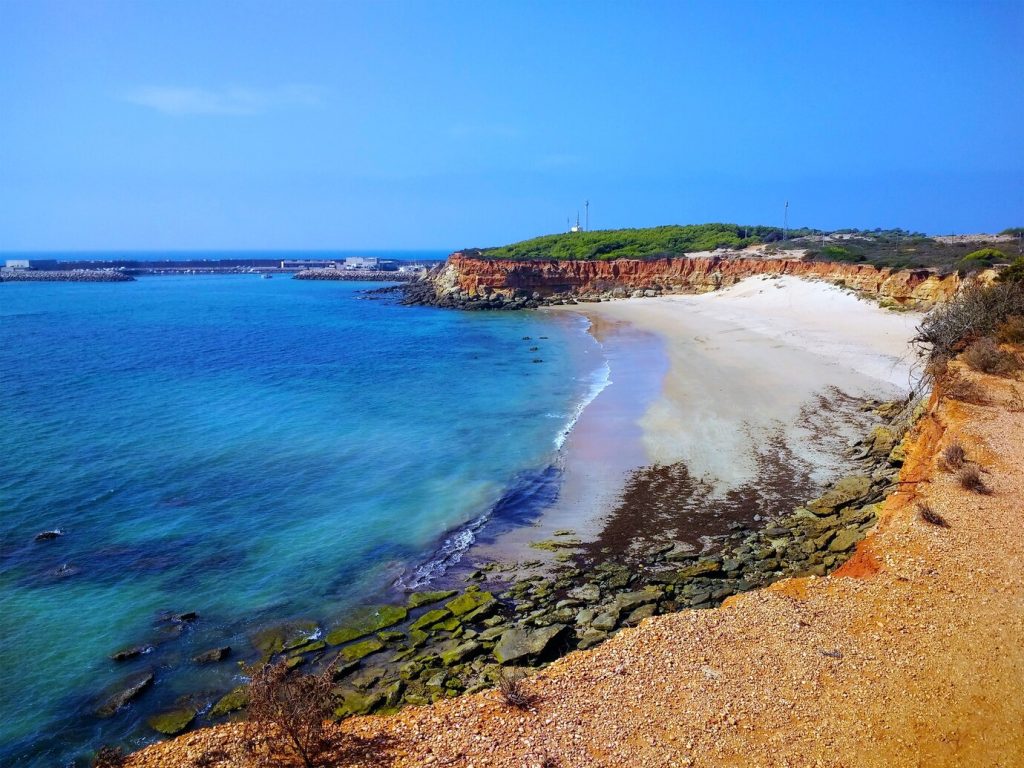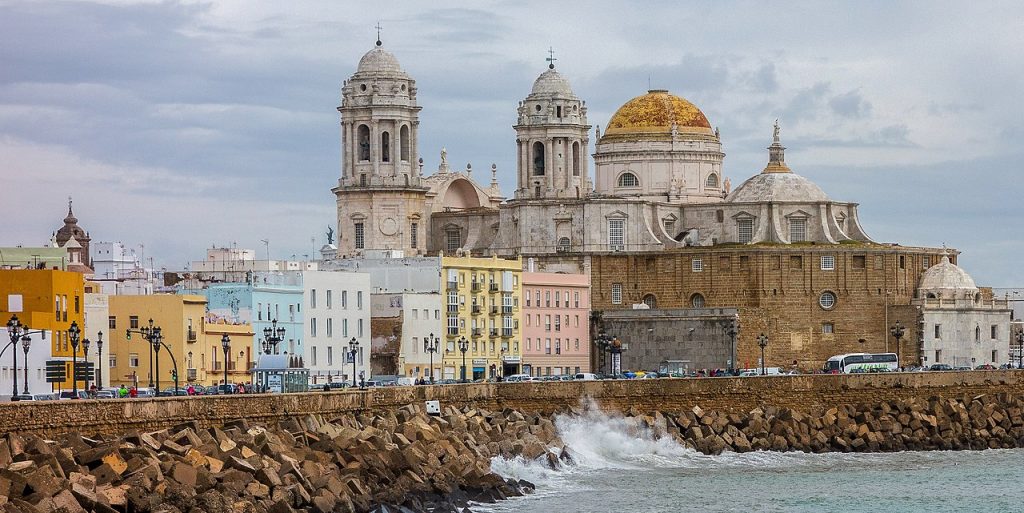Home - Moving to Cadiz - Digital nomads in Cadiz: The new place to be for remote workers
Digital nomads in Cadiz: The new place to be for remote workers
Why remote workers and digital nomads are moving to Cadiz

Table of Contents
Choosing your destination as a digital nomad is an exercise in freedom. As many of the fundamental limits placed on our lives by conventional office work are removed, we are released to begin our individual journey, wherever it may take us. Gone are the days of being tied to a city or region that may be ideal for business but places serious constraints on our life experiences outside of office hours.
Since the 1960’s, a perceived economic divide between northern and southern Europe has led to a steady northward migration as workers sought stable employment in more industrialized destinations in the north. Similarly, the global migration of population from rural areas to cities has also had a significant impact. Now, for the fortunate few known as digital nomads, this trend has been turned on its head, and those who are in a position to take their work with them are free to move to destinations that until recently had been traditionally reserved for shorter stays.
Thanks to improvements in technology and infrastructure, freedom of movement laws, and the ease of international travel, anyone with a spirit of adventure and an open mind can now set up a home base in a city that meets their personal criteria rather than having to prioritise their work life. Alternatively, some may choose to spend shorter stays in various cities or countries, continuing their journey both literally and figuratively to destinations across the globe.
Most of us will already have a clear idea of what we want to do outside of work, and how we want to live, even if the ‘where’ is still up in the air. So what exactly does Cadiz offer to the digital nomad, and why should you consider the city and province as a potential destination?

History
Cadiz is the oldest continuously-inhabited city in the Iberian Peninsula, and among the oldest in Europe. Its name tells a 3,000-year-old story that begins with the Phoenicians who established the city as a trading post named “A Gadir” in 1100 BC. Later, the city became a base for the Carthaginians, as first Hamilcar and then Hannibal Barca waged their wars upon Rome. Following the defeat of the Carthaginians in the Punic Wars, the Romans took the city and renamed it Augusta Urbs Iulia Gaditana (The Augustian City of Julia of Gades), and its inhabitants benefited from Roman citizenship. To this day, 2,500 years later, people from Cadiz are known as gaditanos. Subsequent periods of occupation by the Byzantines and Visigoths, and over 500 years of occupation during the Moors’ rule of Al-Andalus, have all left their marks on the architecture, history and character of the city, as a glance to its skyline will confirm.
The importance of the city’s natural port, which has been modified and enhanced by the various cultures that have occupied the area, means that the history of Cadiz will forever be linked to the sea. Cadiz formed part of a crucial link between the Spanish Empire and its American colonies. The Battle of Trafalgar, one of the best known naval engagements, took place west of Cape Trafalgar. The province’s fishermen provide much of the region’s most typical produce such as its seasonal red tuna. And of course, it is the sea itself that draws many of the visitors to the city.
Digital nomads in Cadiz will notice the existence of two cities in one: the historical old town, enshrined within the remnants of its city walls, and the modern extension that fills the remaining area of the long promontory. The streets of the old town are steeped in history and culture, and anyone who dreams of moving to Cadiz to discover the real Andalucia will feel instantly attracted and connected to the town – Cadiz has a way of making visitors feel welcome.
Climate
A common desire among digital nomads from colder climes is to get away from their home climate and spend their life in the sunshine. With over 3,000 hours of sunshine a year, and among the warmest winters in Europe, Cadiz is a guarantee of lovely weather all year round, meaning that visitors can spend more time outdoors doing what they love. Although the city itself faces onto the Atlantic Ocean, its climate is described as Mediterranean, and the province’s coastline east of Tarifa faces onto the Mediterranean. Cadiz has long been a popular destination for Spaniards seeking a comfortable climate to escape the heat of nearby inland capitals such as Seville or the cold of cities further north.
Beaches
The city itself has a number of spectacular beaches, the most well-known and loved being La Caleta. Situated on the western side of the old town, the beach is as much a part of the city as the city’s oldest castle immediately to its north, the Castillo de Santa Catalina. Both the castle and La Caleta will be familiar to many readers thanks to the James Bond film Die Another Day starring Halle Berry and Pierce Brosnan, which was set in La Havana but filmed in Cadiz.
As beautiful as La Caleta is, the province is perhaps better known for the type of beach where nature takes centre stage. Typified by endless fine, pale or golden sand and cool, clear water, the coastline boasts 138 km of southern Spain’s most popular and iconic beaches such as Los Caños de Meca, Zahara de los Atunes and Bolonia. Many of the beaches are relatively untouched, often due to protection as National Parks, in stark contrast to many beaches in other provinces such as Malaga, where towns, restaurants and infrastructure have developed right down to the sand.
The beach-going experience in Cadiz is therefore quite different: it is not uncommon to park in designated areas near the motorway and walk down to the beach itself, and people often bring meals with them as the nearest restaurant can be miles away. For digital nomads in Cadiz who wish to enjoy the beaches to their fullest, having a means of transport is an advantage. Note that free WiFi is also available at the beaches in Chiclana, Puerto de Santa María, La Barrosa, Sancti Petri, La Puntilla and Valdelagrana, and most popular beaches have good 4G or 5G data coverage, meaning that the office is still within reach.
Another beautiful feature of the coastline is its numerous inlets and coves known as calas. These hidden pockets of tranquillity offer a different experience to beach-goers, with a rocky backdrop and generally less crowding.
Jerez
Jerez de la Frontera, or simply Jerez, is one of the only municipalities in Spain that has a larger population than its province’s capital. This is largely thanks to the prosperity of the city’s businesses, and primarily the drink that takes its name: sherry. The first vines were brought to the region by the Phoenicians in around 1100 BC, and an export trade developed over the following centuries for the regional wine thanks to its ability to last for a long time and travel well. The fame of sherry increased under Roman rule, and by the late 1st century AD the rules for soil types, grape varieties, location and process of elaboration were established, and have remained more or less unchanged since.
During the 500-year period of Moorish rule, wine continued to be produced in the region in spite of the prohibition of alcohol consumption. Subsequently, sherry found enormous popularity across Europe, particularly in the courts, leading to foreign investment and further growth of the industry. Shakespeare, well known himself as a sherry drinker, highlights the popularity and reputation of the drink in many of his plays. Today, many of the largest sherry producers in Jerez have English or Anglo-Spanish names, such as Osborne, Gonzalez-Byass, or Harveys. The city and its surrounds are well worth a visit, and a tour of one or more of the bodegas is essential.
Rota
The town of Rota, situated to the north of Cadiz, is best known in Spain for its joint Spanish-U.S. naval base. The base was founded in 1953 in an effort to strengthen relations between the two countries, and for the strategic importance of Rota’s location near the mouth of the Mediterranean. Spain at the time was partly isolated from the world due to the sanctions incurred by the dictatorship. The base and its thousands of troops therefore represented an enormous culture shock, and necessitated the construction of homes, restaurants, bars, infrastructure, and all sorts of additional businesses and services to cater for the American and Spanish workers that made Rota their home. In turn, the Americans brought their fashion, lifestyle, billiard halls, burger shops, Cadillacs, Coca-Cola, and of course rock and roll. The town and its people were transformed forever. In fact, from its earliest years, Americans and locals fell in love and settled down together, either in Rota or in America, and even the local language and accents have been affected.
Outside the base, Rota is still a quiet beach town, particularly outside of high season, and this may be its main appeal for digital nomads. Life there is calm, simple and safe, and people spend much of their time out of doors, as gaditanos do throughout the province. There are also a number of highly regarded golf clubs, and the restaurant and social scene is vibrant.
Tarifa
Tarifa is the southernmost point of Spain and continental Europe, where the Mediterranean Sea meets the Atlantic Ocean. Just 14 km to the south, the northern coast of Africa is clearly visible. The town has always held significant strategic importance – so much so that it is said to have been the first port to charge merchants for the use of its port, giving rise to the modern word ‘tariff’.
Today, Tarifa is a charming town best known for being one of Europe’s top destinations for surfing, kitesurfing and windsurfing. The whole town has a unique vibe thanks to the contrasts of its bohemian surf culture, the Moorish and Spanish architecture of the old town, and the dramatic surroundings. Tarifa presents a wonderful opportunity for outdoors people looking for a base to pursue their hobbies and explore. And there’s also whale watching, horse riding, day trips to Tangier and plenty of hiking trails on offer.
Conil de la Frontera
Conil, with its white façades, is another ancient town that can trace its origins back to the Phoenicians. Local ceremonies include the maritime procession of the Virgen del Carmen, the Romeria de San Sebastian, the town’s own carnival and fair, Tuna Week, and many others. The town’s 14 km of beaches are very popular among people from Cadiz, the neighbouring provinces, and all over Spain.
White villages
To the north of the province of Cadiz, we find the pueblos blancos or white villages of Cadiz, an essential region for people seeking to discover the real Andalucia. The whitewashed walls of these picturesque towns are as emblematic as the province’s beaches, and there is a wealth of beauty and history waiting to be discovered in each of the towns. Five have been awarded the prestigious Certificate of Quality by the national The Most Beautiful Towns in Spain Association.
Arcos de la Frontera is the first white town on the route, perched atop a towering rocky outcrop beside the Guadalete River. The town features ruins from prehistory and Roman times, Moorish architecture from the Middle Ages, and churches and palaces begun in the 15th and 16th centuries that feature Gothic and Renaissance styles. The town has been declared a National Historic Monument.
Grazalema lays claim to an unlikely record: the highest rainfall of any town on the Iberian Peninsula, often over 2,0000 mm of water a year, due to the limestone mountains of the Sierra de Grazalema National Park. The area’s peculiar microclimate means that its flora and fauna are distinct from those in neighbouring areas.
Further to the northeast lies Setenil de las Bodegas, one of the most extraordinary towns in the country. Part of the town is built under a colossal rocky outcrop, in such a way that the white buildings appear to have been almost swallowed up by the rock itself. The town is equally famous for its local produce, primarily pork products and olive oil.
The White villages continue through the Sierra de Grazalema national park and beyond into the neighbouring province of Malaga, with famous beauty spots such as Ronda only a short drive away.

Carnaval
People from Cadiz are perhaps best known for their humour and character, and nowhere is this more evident than in their Carnaval, which is among the largest carnival celebrations in the world and is unlike any other. The festivities centre around satirical, humorous or sometimes serious musical performances from over 100 local groups that have spent a year preparing their material. The streets are filled for ten days with processions, concerts, and seemingly endless crowds of costumed party-goers. The most well-known performances are hilarious satirical songs that offer a wry perspective on local or national issues. Even those who do not understand the songs are invariably caught up in the showmanship, skill and extravagance of the shows.
Coworking
Given the many reasons for moving to Cadiz, it will come as no surprise that the digital nomad community has already begun to succumb to its charms, and many local businesses have arisen to cater to the needs of the new arrivals. The city itself is now home to a number of co-working spaces that offer meeting rooms, private or virtual offices, and training rooms. These spaces also include other services or opportunities such as a place to socialise or network, and essential office services such as printing or photocopying. Today, many smaller towns have their own dedicated co-working spaces, including Jerez, Tarifa, Prado del Rey, Conil de la Frontera, and El Puerto de Santa María. Not only does this allow digital nomads in Cadiz to travel extensively within the province and still be only a stone’s throw from a physical office, but it is also now possible to choose a smaller town as a semi-permanent base.
Infrastructure
Given the climate and geography of the city, walking is often a valid option for getting around. But Cadiz itself is also well connected by networks of cycle lanes, buses, trams, taxis and trains. For those of us that love to get around on two wheels, the city already benefits from over 20 km of bike lanes, and the province now forms part of the Eurovelo 8 Mediterranean route that begins in Cadiz and extends all the way to Athens, Greece and on to Turkey and Cyprus, meaning that cyclists can move freely without having to worry about traffic.
Cadiz was recently named in a German study as the city with the best public transport network in Spain, thanks to its speedy and efficient services. Ticket prices are particularly reasonable, and the network provides service to all important areas. The Cercanías C-1 train line and T-1 tram line provide access to a number of the major towns, while the broader bus network reaches many of the smaller inland towns.
The nearest major airport is in Jerez de la Frontera, around 35 km from Cadiz. The two points are connected by direct trains (43 minutes) and buses (75 minutes). The Gibraltar airport is further away but offers flights to many additional destinations.
Lastly, we must consider the city’s origins and its constant connection to the sea. The Port of Cadiz Bay is today a safe harbour for fishing vessels, international shipping, cruise liners and ferries to the Canary Islands. The ports in Tarifa and Algeciras provide ferry services to Tangier in Morocco and Ceuta, the autonomous city of Spain on the North African coast.
Business & technology
In recent years, both the local government and local businesses in Cadiz have shown a strong commitment to technology and innovation. Tech hubs have been growing steadily in towns such as Jerez de la Frontera and El Puerto de Santa Maria, and there is a concerted effort to promote development and innovation throughout the region. Cable and ADSL networks provide stable and fast broadband internet across the province, and even the most remote areas are covered thanks to satellite internet service providers . Major investment in mobile networks means that coverage is good; 5G data speeds are around the global average, which is usually more than sufficient for heavy usage scenarios such as live streaming or other media applications.
Work-Life Balance
Moving to Cadiz means being able to enjoy life more. However a workday of digital nomads in Cadiz has been, the simple act of stepping outside reconnects them with what really matters: quality of life. In Cadiz, people understand the work-life balance, and make sure to set aside time with their friends and family for social events, or simply for catching up. Any day can be finished with evening walk through the town or along the beach, a few shared tapas and drinks, or a visit to one of the many eateries, including its 5 Michelin star restaurants (with a further 19 throughout the province). To discover the real Andalucia, you must discover its people.
Moving to Cadiz
One major reason to relocate as a digital nomad is to save money by living in a more affordable region. Fortunately, the price for monthly rentals in Cadiz is significantly lower than in nearby Malaga or Seville, and far lower than in other larger cities. In fact, average rental prices are around a third of those in Barcelona.
That said, finding the right accommodation can be challenging for new arrivals, who are usually unfamiliar with the city, and often need assistance throughout the process. With high seasonal demand for accommodation, the challenges of working with agencies and tenants, who often make higher demands on prospective tenants from overseas, and with the additional difficulty of coping with a foreign language, the process can be daunting even for seasoned travellers.
One popular solution is to work with an English-speaking company that specialises in relocation services and temporary expat rentals. Such companies can not only make the process of moving to the city as seamless as possible, but can provide further assistance including legal expat advice, assistance in setting up bank accounts, preparing access to the health care system, finding a school, and more.





